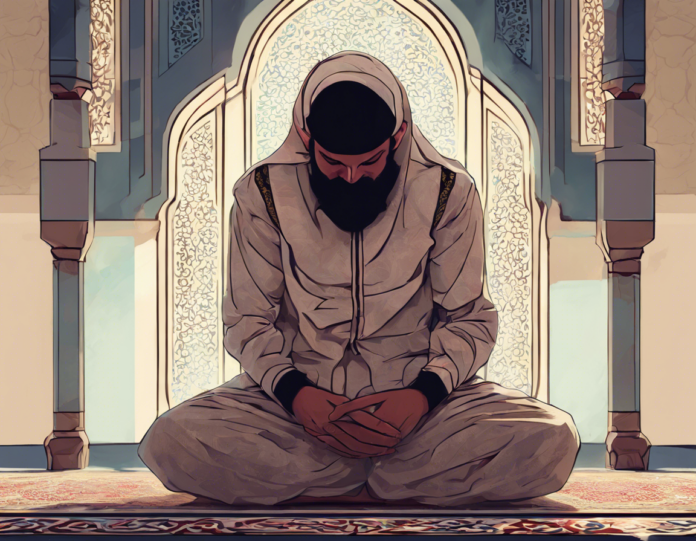Prayer is an essential pillar of Islam, and one of the most significant aspects of Islamic prayer is Salah (prayer). Salah consists of a series of movements and recitations designed to align the worshipper with Allah. One fundamental component of Salah is the concept of Rakat.
What are Rakat?
In Islamic prayer, Rakat refers to a complete cycle of moves performed during the prayer. Each Rakat consists of a set of specific physical movements and recitations. The number of Rakat varies depending on the time of day and the type of prayer being performed. Understanding Rakat and how they are performed is crucial to perfecting your prayer practice.
The Basics of Rakat:
-
Intention (Niyyah): Before beginning each Rakat, the worshipper must have a clear intention in their heart regarding which prayer they are about to perform.
-
Takbir: The Rakat begins with the Takbir, where the worshipper raises their hands to their ears and says “Allahu Akbar” (Allah is the Greatest).
-
Qiyam (Standing): The worshipper stands straight, reciting verses from the Quran.
-
Ruku (Bow): The worshipper bends at the waist, placing their hands on their knees and reciting praises of Allah.
-
Sujood (Prostration): The worshipper goes down to the ground in prostration, with the forehead, nose, palms, knees, and toes touching the ground.
-
Jalsa (Sitting): The worshipper sits briefly between the two prostrations.
-
Tashahhud: The worshipper recites a specific set of prayers while sitting.
-
Salaam: The Rakat concludes with the worshipper turning their head to the right and then to the left, saying “Assalamu Alaikum wa Rahmatullah” (Peace and mercy of Allah be upon you).
Types of Prayers and Rakat:
Fajr Prayer:
- 2 Rakat are performed for the Fajr prayer.
Dhuhr Prayer:
- 4 Rakat are performed for the Dhuhr prayer.
Asr Prayer:
- 4 Rakat are performed for the Asr prayer.
Maghrib Prayer:
- 3 Rakat are performed for the Maghrib prayer.
Isha Prayer:
- 4 Rakat are performed for the Isha prayer.
It’s important to note that the Jummah prayer on Fridays is done in place of the Dhuhr prayer, and it consists of 2 Rakat.
Sunnah and Nafl Rakat:
Apart from the obligatory Rakat mentioned above, there are also Sunnah and Nafl (voluntary) prayers that Muslims can perform. These prayers are highly recommended and can earn additional blessings from Allah.
Common Mistakes in Performing Rakat:
- Lack of Concentration: One of the most common mistakes is performing the Rakat hastily without focusing on the intention and remembrance of Allah.
- Skipping Actions: Some worshippers may unintentionally miss out on certain physical actions or recitations within the Rakat.
- Miscounting: Incorrectly counting the number of Rakat performed can also be a common mistake.
FAQs:
1. How many Rakat are in each prayer?
- The number of Rakat varies for each prayer. Fajr has 2, Dhuhr has 4, Asr has 4, Maghrib has 3, and Isha has 4 Rakat.
2. Can I perform extra Nafl Rakat?
- Yes, Muslims are encouraged to perform voluntary prayers, known as Nafl prayers, in addition to the obligatory ones.
3. What should I do if I forget how many Rakat I have performed?
- If you are uncertain about the number of Rakat performed, it is recommended to base your prayer on the lower number to ensure you do not miss any obligatory prayers.
4. Can I combine two prayers and their Rakat?
- In specific circumstances, Muslims are allowed to combine prayers, such as Dhuhr and Asr or Maghrib and Isha. However, this should only be done in exceptional situations and according to Islamic guidelines.
5. Is there a specific order in which Rakat should be performed?
- Yes, each prayer has a specific order in which the Rakat are performed, and it’s essential to follow the correct sequence to ensure the validity of the prayer.
Understanding Rakat is crucial for any Muslim looking to perfect their prayer practice. By mastering the basics of Rakat and ensuring they are performed correctly and with focus and intention, worshippers can strengthen their connection with Allah and deepen their spiritual practice.








